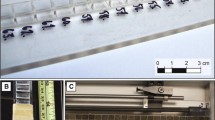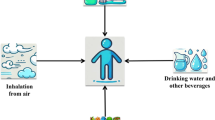Abstract
Raman spectroscopy has long offered potential for analytical specificity, sensitivity, and versatility in the study of a broad array of environmentally relevant compounds. As with other optical analytical methods, the use of the technique has been hampered by challenges in optimizing the sensor-sample interface, managing turbidity for quantitative analysis, limiting fluorescence interference, preventing biofouling (particularly for long-term monitoring), and achieving low cost. As outlined herein, research over the last several years has systematically addressed each of these factors so that Raman spectroscopy is arguably ready to be revisited as a robust and flexible field measurement technique and may now warrant targeted development effort so that it may become a more routinely employed field analysis method. In addition, the developments outlined herein are believed to be applicable to material analyses in complex, turbid, and/or fluorescence-prone settings in a broad array of fields.
Access this chapter
Tax calculation will be finalised at checkout
Purchases are for personal use only
Similar content being viewed by others
References
Bilodeau TG, Ewing KJ, Kraucunas IP, Jaganathan J, Nau GM, Aggarwal ID, Reich FR, Mech SJ (1994) Fiber optic Raman probe detection of chlorinated hydrocarbons in standard soils. Proc SPIE Int Soc Opt Eng 2068:258–270
Bixler GD, Bhushan B (2012) Biofouling: lessons from nature. Philos Trans R Soc Lond A Math Phys Eng Sci 370(1967):2381–2417
Cloete TE, Jacobs L, Brözel VS (1998) The chemical control of biofouling in industrial water systems. Biodegradation 9(1):23–37
Cooper JB, Flecher PE, Vess TM, Welch WT (1995) Remote fiber-optic Raman analysis of xylene isomers in mock petroleum fuels using a low-cost dispersive instrument and partial least squares regression analysis. Appl Spectrosc 49(5):586–592
Goetz MJ Jr, Cote GL, Erckens R, March W, Motamedi M (1995) Application of a multivariate technique to Raman spectra for quantification of body chemicals. IEEE Trans Biomed Eng 42(7): 728–731
Manov DV, Chang GC, Dickey TD (2004) Methods for reducing biofouling of moored optical sensors. J Atmos Ocean Technol 21(6):958–968
Oshima Y, Komachi Y, Furihata C, Tashiro H, Sato H (2006) Fluorescence-suppressed Raman technique for quantitative analysis of protein solution using a micro-Raman probe, the shifted excitation method, and partial least squares regression analysis. Appl Spectrosc 60(9):964–970
Pulich WM (1974) Resistance to high oxygen tension, streptonigrin, and ultraviolet irradiation in the green alga Chlorella sorokiniana strain ORS. J Cell Biol 62(3):904–907
Rossabi J, Riha BD, Haas JW, Eddy-Dilek CA, Kreeger AGL, Carrabba M, Hyde WK, Bello J (2000) Field tests of a DNAPL characterization system using cone penetrometer-based Raman spectroscopy. Ground Water Monit Remediat 20(4):72–81
Seasholtz MB, Archibald DD, Lorber A, Kowalski BR (1989) Quantitative analysis of liquid fuel mixtures with the use of Fourier transform near-IR Raman spectroscopy. Appl Spectrosc 43(6):1067–1072
Shoute LCT, Schmidt KJ, Hall RH, Webb MA, Rifai S, Abel P, Arboleda PH, Savage A, Bulmer JT, Loppnow GR (2002) UV Raman spectroscopy of oilsands-derived bitumen and commercial petroleum products. Appl Spectrosc 56(10):1308–1313
Sinfield JV, Colic O (2010) US Patent 8,325,337 B2 “Time Resolved Raman spectroscopy”. Washington, DC, USA
Sinfield JV, Monwuba CK (2014) Assessment and correction of turbidity effects on Raman observations of chemicals in aqueous solutions. Appl Spectrosc 68(12):1381–1392
Sinfield JV, Monwuba CK (2016) Inferential monitoring of chlorinated solvents through Raman spectroscopic observation of the vibrational modes of water. Talanta 148:7–16
Sinfield JV, Germaine JT, Hemond HF (1999) Effects of soils on laser induced fluorescence of BTX contaminated pore waters. J Geotech Geoenviron Eng ASCE 125(12):1072–1077
Sinfield JV, Colic O, Fagerman D, Monwuba CK (2010) A low cost time-resolved spectroscopic sensing system enabling fluorescence rejection. Appl Spectrosc 64(2):201–210
Soini SM, Koskinen KT, Vilenius MJ, Puhakka JA (2002) Potential of microbial growth control in water hydraulic systems by UV-irradiation and filtration. J Chem Technol Biotechnol 77(8):903–909
USDoE (U.S. Department of Energy) (1999) Raman Probe. DOE/EM-0442, July
Yebra DM, Kiil S, Dam-Johansen K (2004) Antifouling technology – past, present and future steps towards efficient and environmentally friendly antifouling coatings. Prog Org Coat 50(2):75–104
Author information
Authors and Affiliations
Corresponding author
Editor information
Editors and Affiliations
Rights and permissions
Copyright information
© 2017 Springer Nature Singapore Pte Ltd.
About this chapter
Cite this chapter
Sinfield, J.V. (2017). Advances in Raman Spectroscopy for the Geoenvironment. In: Sivakumar Babu, G., Reddy, K., De, A., Datta, M. (eds) Geoenvironmental Practices and Sustainability. Developments in Geotechnical Engineering. Springer, Singapore. https://doi.org/10.1007/978-981-10-4077-1_12
Download citation
DOI: https://doi.org/10.1007/978-981-10-4077-1_12
Published:
Publisher Name: Springer, Singapore
Print ISBN: 978-981-10-4076-4
Online ISBN: 978-981-10-4077-1
eBook Packages: EngineeringEngineering (R0)




